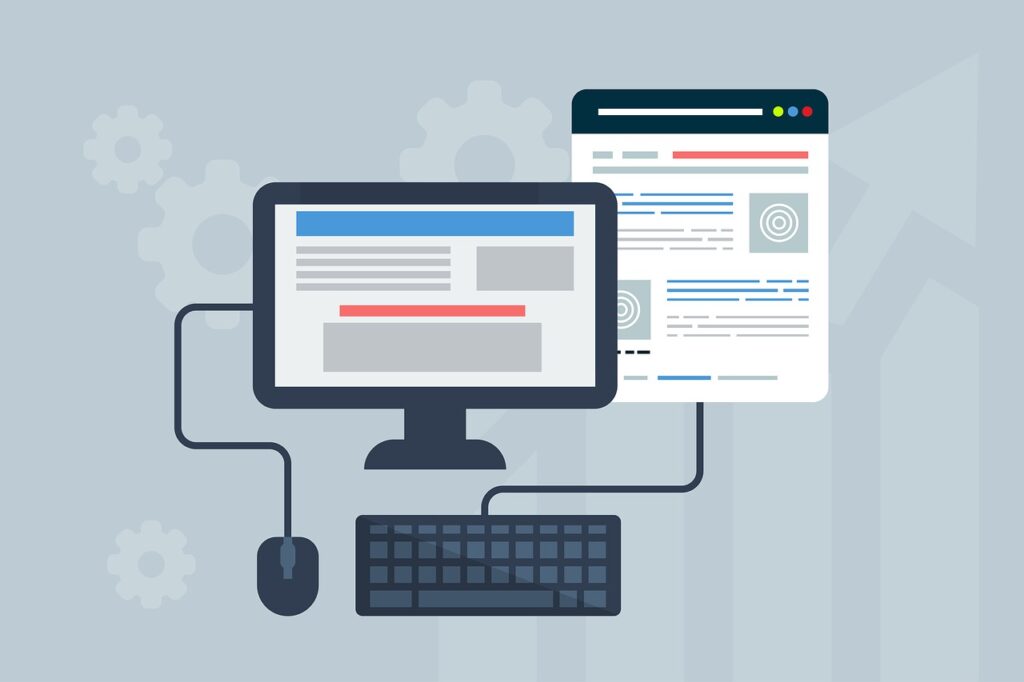
Introduction:
In today’s digital world, your website is the face of your brand. Effective website design is the cornerstone of online success. This comprehensive guide will take you on a journey through the realm of website design, from understanding its significance to mastering the key principles and practices. Whether you’re a business owner, marketer, or entrepreneur, this guide will empower you to create a digital presence that leaves a lasting impact.
Chapter 1: The Significance of Website Design
Before delving into the intricacies of website design, let’s explore why it matters in the digital landscape.
1.1. First Impressions Count
Your website is often the first interaction potential customers have with your brand. A well-designed site can make a powerful first impression.
1.2. User Experience (UX)
Effective website design focuses on delivering an outstanding user experience, making it easy for visitors to navigate and engage with your site.
1.3. SEO and Visibility
Quality website design incorporates SEO best practices, ensuring your site ranks higher in search engine results and attracts organic traffic.
Chapter 2: Types of Website Design
Website design comes in various forms, each catering to different needs and objectives.
2.1. Custom Website Design
Custom website design offers tailored solutions that align with your brand’s unique identity and requirements.
2.2. Template-Based Design
Template-based design provides a cost-effective approach, utilizing pre-designed templates that can be customized to suit your brand.
2.3. E-commerce Website Design
For online businesses, e-commerce website design focuses on creating a seamless shopping experience for customers.
2.4. Responsive Design
Responsive website design ensures your site functions flawlessly and appears great on all devices, from smartphones to desktops.
Chapter 3: The Benefits of Effective Website Design
Working with expert website designers offers numerous advantages.
3.1. High-Quality and Professionalism
Professional website designers ensure high-quality work that reflects positively on your brand.
3.2. Time and Cost Efficiency
Expert designers save you time and money by providing efficient solutions and avoiding costly mistakes.
3.3. Customization and Creativity
Professional designers bring creativity and customization to your project, making your website stand out.
3.4. Ongoing Support and Maintenance
Reputable designers offer ongoing support, ensuring your website remains updated, secure, and relevant.
Chapter 4: Key Principles of Website Design
To create an exceptional website, it’s essential to understand the key principles that guide the design process.
4.1. User-Centered Design
Focus on designing with the user in mind, ensuring that the website is intuitive, user-friendly, and aligned with user expectations.
4.2. Visual Appeal
Aesthetics matter; the visual elements of your site, including color, typography, and imagery, should align with your brand’s identity.
4.3. Content is King
Compelling content is essential; it informs, engages, and keeps visitors on your site. Strategic use of keywords, including “website design,” is crucial.
4.4. Navigation and Accessibility
Create a clear and intuitive navigation system to guide visitors. Accessibility features make your website inclusive and user-friendly for all.
4.5. Loading Speed
Optimize your site’s loading speed to meet the demands of users who expect fast, responsive websites.
4.6. Security
Website security is paramount. Protect your site and user data through SSL certificates, regular updates, and strong password practices.
Chapter 5: The Web Design Process
Understanding the website design process is essential for a successful project.
5.1. Requirements Gathering
Begin by gathering and understanding your project’s requirements, objectives, and target audience.
5.2. Design and Prototyping
The design phase creates visual prototypes and concepts, ensuring your site aligns with your brand’s identity.
5.3. Development and Implementation
Develop the chosen design into a functional website, using the latest technologies and coding standards.
5.4. Testing and Quality Assurance
Test the site to ensure it’s free of errors and functions correctly, providing a seamless user experience.
5.5. Launch and Ongoing Support
Once the website is launched, ongoing support and maintenance keep it updated and secure.
Chapter 6: The Future of Website Design
Website design is an ever-evolving field. Explore what the future may hold for this industry.
6.1. Emerging Technologies
Stay informed about emerging technologies and trends, such as AI, AR/VR, and progressive web apps, that may impact website design.
6.2. Mobile-First Design
With the rise of mobile devices, mobile-first design will continue to be a priority.
6.3. User-Centered Design
User experience will remain central, emphasizing accessibility, inclusivity, and user satisfaction.
Conclusion:
Website design is the key to crafting an impactful digital presence. It shapes how your brand is perceived, how users engage with your website, and, ultimately, your digital success. By following the steps and principles outlined in this guide, you can navigate the world of website design with confidence, make informed decisions, and unlock the full potential of your online presence. Your website is your digital canvas, and website design is the brush you use to paint your masterpiece. With “website design” as your focus keyword, embrace the art of website design, and watch your online presence shine brighter than ever before. It’s time to create digital excellence that captivates and leaves a lasting impression on your audience.
